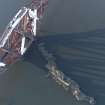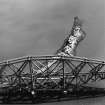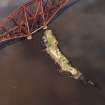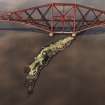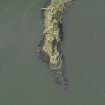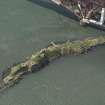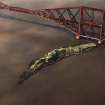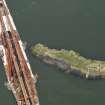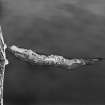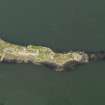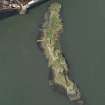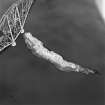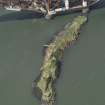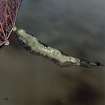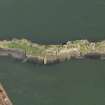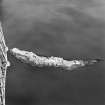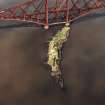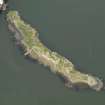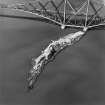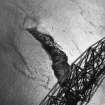Forth Defences, Inner, Inchgarvie Battery
Coastal Battery (First World War)
Site Name Forth Defences, Inner, Inchgarvie Battery
Classification Coastal Battery (First World War)
Alternative Name(s) Forth Defences; World War I; Inchgarvie; Firth Of Forth
Canmore ID 121787
Site Number NT17NW 192
NGR NT 1370 7950
Datum OSGB36 - NGR
Permalink http://canmore.org.uk/site/121787
- Council Edinburgh, City Of
- Parish Dalmeny
- Former Region Lothian
- Former District City Of Edinburgh
- Former County West Lothian
The battery at Inchgarvie was built for two 12-pdr guns, between June 1900 and October 1901, at a cost of £2826. It took the form of a single block of buildings to the west, with the two guns on the same overall platform to the east. This was the armament of the island on the outbreak of war in 1914.
In April 1914 proposals had been approved to increase the armament of the battery to four 4-inch guns, with three defence Electric Lights - large searchlights to illuminate targets for the guns at night.
Two new gun emplacements were added to the east of the existing pair, and a new engine room was to be built at the west of the existing block of buildings. The two 12-pdrs remained in position until the 4-inch guns were ready, and then they were replaced by two further 4-inch guns on special mountings to fit on the 12-pdr emplacements [The National Archives WO 192/108]. This was done by September 1915. The 12-pdrs went to the Coast Guard battery. The 4-inch guns (Mk IIIs) were moved to Inchmickery (NT28SW 1.00) (having been intended for Inchcolm, which was finally equipped with new Mk Vs) and replaced by four 12-pdr Quick Firing (18cwt) guns (in place between September 1916 and January 1917). The fort had two .303 Maxim machine guns for close defence against enemy troops.
In the end, the island was armed with four 12-pdrs, which remained in position when the defences of the Forth were re-working in 1916-17. It also finally had five Defence Electric Lights, although running more than four at once would overstrain the generating engines.
The guns were removed and returned to store in May 1920.
The battery had an establishment, on mobilisation, of 4 officers and 61 other ranks, which rose to about 90, with a detachment of 44 Royal Engineers for working the Defence Electric Lights and the telephone. Medical cover was provided by a RAMS Orderly from Edinburgh Castle.
Information from HS/RCAHMS World War One Audit Project (GJB) 19 August 2013.
NT17NW 192 1370 7950
This First World War coast battery occupies with its accommodation area, much of the island of Inchgarvie. The four gun battery is substantially complete with searchlight emplacements, magazines and barracks. At the outbreak of war in 1914, the battery mounted two quick firing 12 pounder 12cwt guns and two .303 Maxim machine guns on parapet mountings. During 1914 the 12 pounder guns were due to be replaced by 4-inch calibre, but this actually occurred during 1915. Later in the war the 4-inch guns were replaced by four 12 pounder (Naval) 18cwt guns, the 4-inch guns being transferred to Inchmickery (NT28SW 1.00). This battery fired in anger during the war.
The guns were removed in 1920 and the battery was not armed during World War Two.
J A Guy 1997; NMRS MS 810/5, 43-8; PRO WO/78/5172.
Project (March 2013 - September 2013)
A project to characterise the quantity and quality of the Scottish resource of known surviving remains of the First World War. Carried out in partnership between Historic Scotland and RCAHMS.


































